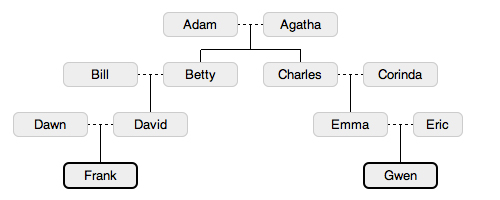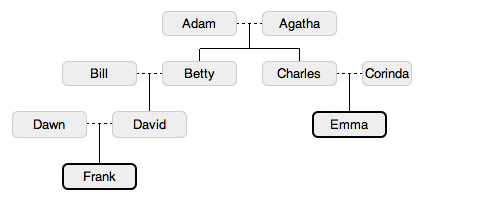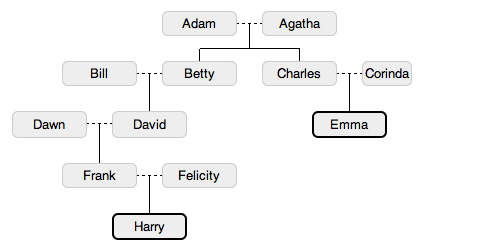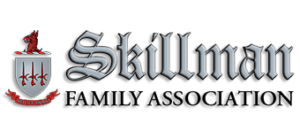Family Tree University – Winter 2016 Virtual Genealogy Conference
/in Uncategorized/by Kenneth R. SkillmanGet an intensive dose of genealogy education at Family Tree University’s Winter 2016 Virtual Genealogy Conference. At this weekend workshop, you’ll learn research strategies and resources to boost your genealogy knowledge —and because it’s web-based, you can participate from anywhere!
Course Runs: Mar 11th 2016 – Mar 13th 2016
Hurry now to save! Use coupon code EARLYVCWINTER through Feb. 5, 2016 to get $40 off the price!
- 15 half-hour video classes in four tracks:
— genetic genealogy
— genealogy technology track
— research strategies track
— ethnic research track - Unlimited viewing: Your all-access pass gets you into all 15 classes during the three-day conference—you can even download the videos to watch again later or view ones you missed!
- Make your own schedule: Because the classes are pre-recorded, you don’t have to show up at a specific time to catch the ones you want—or choose between sessions you’re interested in.
- Live chats and message board discussions: Enhance your conference experience by participating in conversations with FTU staff and instructors.
- Convenience: Unlike in-person genealogy conferences and seminars, you can take part in the Family Tree University Virtual Conference anywhere you can connect to the internet: at home, at the library, at the coffee shop with your laptop—choose the spot that works best for you. Best of all: No travel costs and parking hassles!
- Value: Conference registration saves you 55% off the price of purchasing each video separately ($29.99). It’s like getting 8 classes for free!
- “Swag bag” of freebies from ShopFamilyTree.com
Visit Family Tree University for more information.
Historical Societies: The often overlooked source for valuable information
/in Uncategorized/by Kenneth R. SkillmanOne area in genealogical research often overlooked is historical societies for individual research purposes. While staffing of such organizations is often limited, a clear and concise question can sometimes lead to exciting results.
Frequently staffed by volunteers who have an expert knowledge of the community, they can be knowledgeable about local records, such as vital statistics, court and church records, and can cut through the red tape that the non-resident may encounter when addressing agencies and associations directly.
Membership to organizations like the New York Genealogical and Biographical Society and the Genealogical Society of New Jersey and the Suffolk County Historical Society can also provided support for individual research assistance.
Membership to Historical societies can be added value to the genealogist, particularly in the era of modern technology. Currently, through a membership to the NYGBS one has access to the Fold3 database, which has many of the archival records of NARA — this exciting database provides access to war records from the Revolution through World War II which can contain vital information to assist in determining the ancestor’s war records and experiences therein.
Likewise, the Historical Society of Pennsylvania with membership offers access to Genealogy Bank and ancestry.com®. An exciting new database is the Oliver H. Blair Funeral Home Index, containing genealogical information from 1920 to 1980. The database includes records from around the Philadelphia and southeast New Jersey areas. These types of localized sources can be invaluable to researchers, particularly when other records have proven unsuccessful. Join them, use their services, and promote their activities to other genealogists.
Michael Wrona
Vice President
Understanding Cousin Relationships
/3 Comments/in Uncategorized/by Kenneth R. SkillmanClassification of cousins is often misunderstood by non-genealogists. All cousins share a common ancestor, often called the Most Recent Common Ancestor (MRCA). First cousins share common grandparents. Second cousins share common great grandparents. Third cousins share common 2nd great grandparents, and so forth. Skillmans in America who have to date tested their Y-chromosome DNA are all descended from common 6th great grandparents, making all of us 7th cousins.
The son or daughter of your aunt and uncle is your first cousin because you share a common set of grandparents. But what about a child of your first cousin? Most people think that child is their second cousin, but that is not correct. That child is still a first cousin, but “once removed” by the generational difference. So that child is a first cousin, once removed. If that child then had a child of his or her own, you and the younger child would then be first cousins, twice removed, because there are two generations difference between you and the younger child. Your child and your first cousin’s child would be second cousins, because they share common great grandparents.
First Cousins

Second Cousins

First Cousins Once Removed

First Cousins Twice Removed

Most genealogical software today has a ‘relationship finder,” in which you can compare any two people in your database and determine how they are related. Nevertheless, a basic understanding of the principles of relationships will make it easy to assess the degrees and removals in the relationships between cousins. At least you now know that your first cousin’s child is not your second cousin.
John E. Skillman III
President
Interesting links
Here are some interesting links for you! Enjoy your stay :)Pages
- “Hell Devil” Skillman
- A. Dix Skillman
- Aaron J. Skillman
- About SFA
- Benefits of Membership
- Blog
- Box 1 • F1 to F5
- Box 1 • F21 to F26
- Box 1 • F27 to F34
- Box 1 • F6
- Box 1 • F7 to F20
- Box 2 • F1 to F6 & F8 to F14
- Box 2 • F15 to F26
- Box 2 • F27 to F33
- Box 2 • F34 to F39
- Box 2 • F40 to F43
- Box 2 • F44
- Box 2 • F7 • Part 1 • Francis Skillman
- Box 2 • F7 • Part 2 • Francis Skillman
- Box 3 • F1
- Box 3 • F10 • Part 1 • Pages 1 to 32
- Box 3 • F10 • Part 2 • Pages 33 to 65
- Box 3 • F10 • Part 3 • Pages 66 to 96 (end)
- Box 3 • F11 • Part 1 • Pages 1 to 42
- Box 3 • F11 • Part 2 • Pages 43 to 85 (end)
- Box 3 • F2 • Part 1
- Box 3 • F2 • Part 2
- Box 3 • F3
- Box 3 • F4 • Part 1 • Photos 1 to 59
- Box 3 • F4 • Part 2 • Photos 60 to 105
- Box 3 • F4 • Part 3 • Photos 106 to 144
- Box 3 • F4 • Part 4 • Photos 145 to 185
- Box 3 • F4 • Part 5 • Photos 186 to 226
- Box 3 • F4 • Part 6 • Photos 227 to 255
- Box 3 • F4 • Part 7 • Photos 256 to 276
- Box 3 • F5
- Box 3 • F6 • Part 1
- Box 3 • F6 • Part 2
- Box 3 • F6 • Part 3
- Box 3 • F7
- Box 3 • F8 • Part 1
- Box 3 • F8 • Part 2
- Box 3 • F8 • Part 3
- Box 3 • F9 • Part 1
- Box 3 • F9 • Part 2
- Brent Thomas Skillman
- By-Laws
- Captain Henry Skillman
- Charitable Contributions
- Coat of Arms
- Contact Us
- Correcting a Century-old Error
- David R. Skillman
- Dues
- Elias Skillman Family Record
- FAQ
- Finding Aid
- Genealogy
- Harold A. “Hap” Skillman
- Henry Howson Skillman
- History
- Home
- Isaac Newton Skillman • 1885 Letter
- Isaac Newton Skillman • First Enlistment
- Isaac Newton Skillman • Ohio Cavalry • Civil War
- Isaac Newton Skillman • Second Enlistment
- Isaac Skillman Civil War Collection
- John Earle Skillman III
- Join SFA
- Judith Skillman
- Lineage Chart
- Links
- Members Only
- Membership Application
- Membership Directory
- Mrs. Alfred Peter Skillman Bellis
- Named After Skillmans
- Officers
- Rebecca S. Skillman
- Rev. William Jones Skillman
- Rose & Robert Skillman
- SFA Store
- Simple Tommy
- Skillman Biographies
- Skillman DNA Project
- Skillman Family Research
- Skillman Family Tree
- Skillman Obituaries
- Skillman Patriots in the Revolutionary War
- Skillman, New Jersey
- Skillman-Hart DNA Connection
- Skillmans of America
- Skillmans of New York
- Strÿcker Family Record
- The Rose & Robert Skillman Branch of the Detroit Public Library
- Thomas Gilbert Skillman Sr.
- Thomas Stryker Skillman
- Thomas1 Skillman
- Tips for Using These Resources
- Trish Macdonald Skillman
- Wm. J. Skillman Collection
Categories
- Autobiographies
- Dutch Ancestry
- Education
- Featured
- Genealogy Resources
- Historic Preservation
- Lineage Societies
- Memoires
- Memorials
- Message
- Poetry
- Publications
- Skillman DNA
- Skillman Family Research
- Skillman Family Reunions
- Skillman Family Tree
- Skillman Genealogy
- Skillman Obituary
- Skillman Places
- Uncategorized

